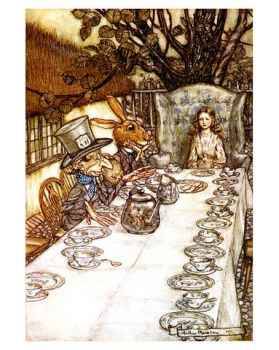Veterans’ Day was a rare treat: all six of us were off at the same time. I’d wanted to see the traveling exhibit from Cooperstown, NY, that was at the Oakland Museum of California History. DD#1 had to visit the museum as an assignment for her California History class. Hubs was up for an adventure. Then I told the youngest two.
“But I don’t even like baseball!” DD#2 protested.
“Mom, I don’t really want to go,” said DS#2.
That’s when I raised my motherly prerogative.
“You’re going,” I told them.
The exhibit is titled “Baseball As America” and looks at the role baseball plays in our culture, how so firmly entrenched it is that we often don’t recognize it. Baseball is what America has used to get over crisis, both foreign—as in December 7 or September 11—and domestic—integration and assimilation. There was a special emphasis on baseball in the Bay Area, from the old Pacific Coast League to the number of players who came from local high schools. There was a side exhibit that talked about players coached by George Powles at McClymonds High School in Oakland and a photo exhibit about Latinos in baseball—those who have made it and those who are trying to break in.
Besides presenting history, “Baseball As America” had exhibits about the physics of baseball, how the rules have encouraged players and fans to experiment with equipment designs to improve their performance (including some spectacularly failed concepts), how commercialization became inevitable, the role of the fans, the All-American Girls Professional Baseball team, and integration.
The last was kind of a shock. The San Francisco Giants team that I grew up with included Mays, McCovey, Marichal, Cepeda, and Alou (at one point, Felipe, Jesus, and Matty). Since we rarely watched the games, but listened to them on the radio, I didn’t realize that Roy Campanella, of the hated Los Angeles Dodgers, was black. I figured he was Italian and the reason folks didn’t like him was because all sensible folks hated the Dodgers!
Oh, to be that young and innocent again!
I knew I had DD#2 when she brought me over to the exhibit on baseball fans and showed me a picture of a statue of Mark McGwire in a St. Louis mall. The statue was made entirely out of Girl Scout cookies.
Hubs kept coming up to check on me.
“Go ahead,” I told him. “You know I read everything. I’m going to be awhile.”
“Oh, I’m not done yet,” he answered. “There’s just too much to see. I need to go through a second time and pick up what I missed.”
I spent three hours at the exhibit; the rest of the family only slightly less.
Then we went to see the sections on California history and California art.
After five hours, we finally went home. Towards the end, the kids were telling me not to read any of the explanations on the exhibits. They were worried we’d never make it home. And they were getting hungry.
During one of our breaks, DD#2 said, “My class should come here.”
“Really? Why?” I asked.
“Because it’s interesting,” she said.
“I thought you didn’t like baseball.”
“I don’t. It was still interesting, though.”
DS#2 had much the same reaction. His favorite part was the physics of baseball and watching the clips, especially Abbott & Costello’s “Who’s On First” routine.
As I walked through the exhibit, I thought of my uncle. He is a true baseball fan and remembers the Pacific Coast League days. Heck, he’s a contemporary of the DiMaggio brothers. (Some of the teachers my mother had in junior high school had taught the DiMaggio’s and told stories about how the Italian kids would go home for lunch. When they came back, they would fall asleep because of the pasta and vino they had consumed.) Turns out my cousin and a friend had taken him a few weeks ago. He may not remember the score of yesterday’s game, but he recognized the players by number and the equipment they used.
If you live in the Bay Area, go. If this exhibit travels to your area, go. While this exhibit exposes the flaws in the American Dream through baseball, it also shows our dreams, our capacity for inventiveness, our ability to change. Baseball has fielded teams as varied as the nations itself, working together; has brought together fans of different socio-economic-educational strata; has given us a common culture. It’s more than “just a game.”
Sunday, November 13, 2005
Baseball As America--The Exhibit
Posted by
March Hare
at
9:47 AM
![]()
Subscribe to:
Comment Feed (RSS)




|